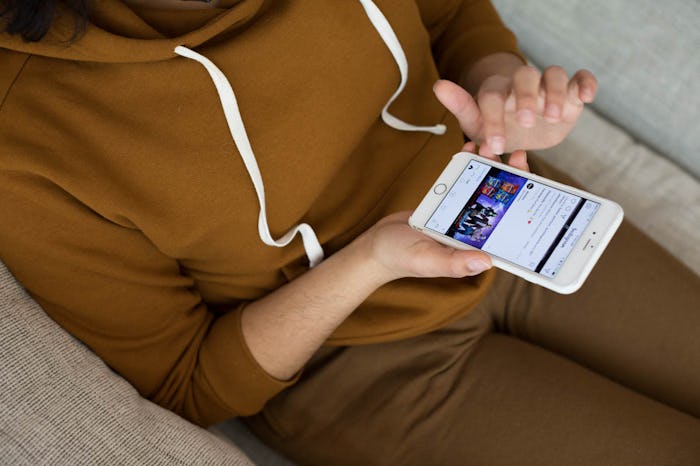Creating an amazing product doesn’t necessarily guarantee success for entrepreneurs. After all, you have to make sure you know how to get people to discover your product, which is why it's usually wise to hire a public relations firm that can help you package, market, and sell it to the masses.
"Getting your product press and media exposure is a great strategy to building brand awareness and a following," says Courtney Richardson, beauty and lifestyle publicist and founder of Do It For The Brand. "If you don't have a budget or many resources, don't fret! Find someone or a PR firm who believes in your product or idea and can work with you to get the word out about it."
PR firms are filled with professionals who have experience identifying and reaching out to the right audience for your business, and they’re the ones who can ultimately help you figure out how to make your product go viral. And while yes, to actually go viral can feel a bit like hitting the jackpot, there are still valuable lessons to be learned from products or businesses that have gone viral, and how they did it.
To help you achieve your own dreams of viral success, we reached out to a few public relations professionals to ask them their best advice for entrepreneurs – specifically for those who may just be getting started. Here's what they had to say:
Know Your Product's Story
No matter if you're coming up with a new PR strategy for a product that's already a hit, or a strategy for a big new launch, you and your team will need to come up with a strong storyline that will pave a successful road for that product, says Richardson.
"Even if you don't know where to start or think there isn't one, everything and everyone has a story to tell. You want to tell a story that resonates with your audience," says Richardson. "If your product has a charitable component, does the story tug on heartstrings? If you own a beauty product, is your brand's story that you are trying to solve a beauty dilemma we all face or can relate to? Once you know your story, then you are better prepared on how to best share your product with the world."
Brook Larios, co-founder and CEO of public relations firm PlainClarity, emphasizes the importance of having originality behind your story when reaching out to potential customers. “Tell the client's story in an unexpected, yet germane way. We did this when launching Duck Foot Brewing Company in San Diego.” Their decision to focus on gluten-free beers was a unique opportunity to separate themselves from their competition.
Use Your Competitors To Your Advantage
"You can learn from those who are behind and ahead of you," says Richardson, who cites the success of Rhianna's Fenty Beauty line as an outstanding example of using your competitors to your advantage. "Fenty Beauty has been able to fill a void in the beauty space that many of its competitors had not been fulfilling by offering a wide range of products that cater to all skin tones." You should have a similar mindset when you're planning how you can make your own product stand out from the competition.
"When it comes to competitors, start strategizing and asking questions," says Richardson. "What press outlets are your competitors featured in? What verticals do they use to promote or get their message across? What are their strengths and weaknesses? Where does their product fall short when it comes your audience?" Asking yourself these questions will help you set up a strong position for your product among your target audience.
Don't Overlook The Allure Of Beautiful Visuals
“The specific item has to be trendy, plus visually appealing,” says Paloma Colón, account supervisor at Katalyst Public Relations. Visual content is getting more important by the day; in fact, Inc. reports that “posts that include images produce 650 percent higher engagement than text-only posts.” That’s huge!
Colón’s own client, Puesto in San Diego, is a great example of utilizing a visual-first strategy. “Pastry Chef Jessica Scott makes amazing and delicious churros and eclairs. They fit within Puesto's traditional Mexican Artisan flavors, but are unique and visually intriguing. The eclairs were featured on MSN.com, and garnered over 400,000 views on Facebook!”
Find Brand Ambassadors That Your Audience Relates To
Marketing, whether you’re doing it yourself or using a PR company, can only go so far, and it’s important to recruit brand ambassadors to continue the word-of-mouth buildup. PR companies have many connections, often in niche industries, which can give them a leg up when it comes to connecting with advocates.
Larios recommends entrepreneurs take advantage of these relationships. “Reach out to those who, if they organically came into contact with the brand you're representing, might become instant advocates ... then give them an experience, whether sending a product to test or visiting the client's location," says Larios.
Richardson recommends a similar approach, with a specific emphasis on getting your product into the hands of bloggers and social media influencers before it debuts to the public. "Not only will this help you network and build exclusive relationships, but this also can build anticipation before your product launches while getting tons of eyes on it."
Don't Be Afraid Of A Little Bit Of Controversy
“Controversy shouldn't have a purely negative connotation,” says Larios. “Doing the unexpected is controversial. Success begins with caring and controversy.” Part of capturing a crowd’s attention is by showing them something they didn’t expect to see — just like in that one movie with a twist ending that your friends can't stop talking about. See? It works.
